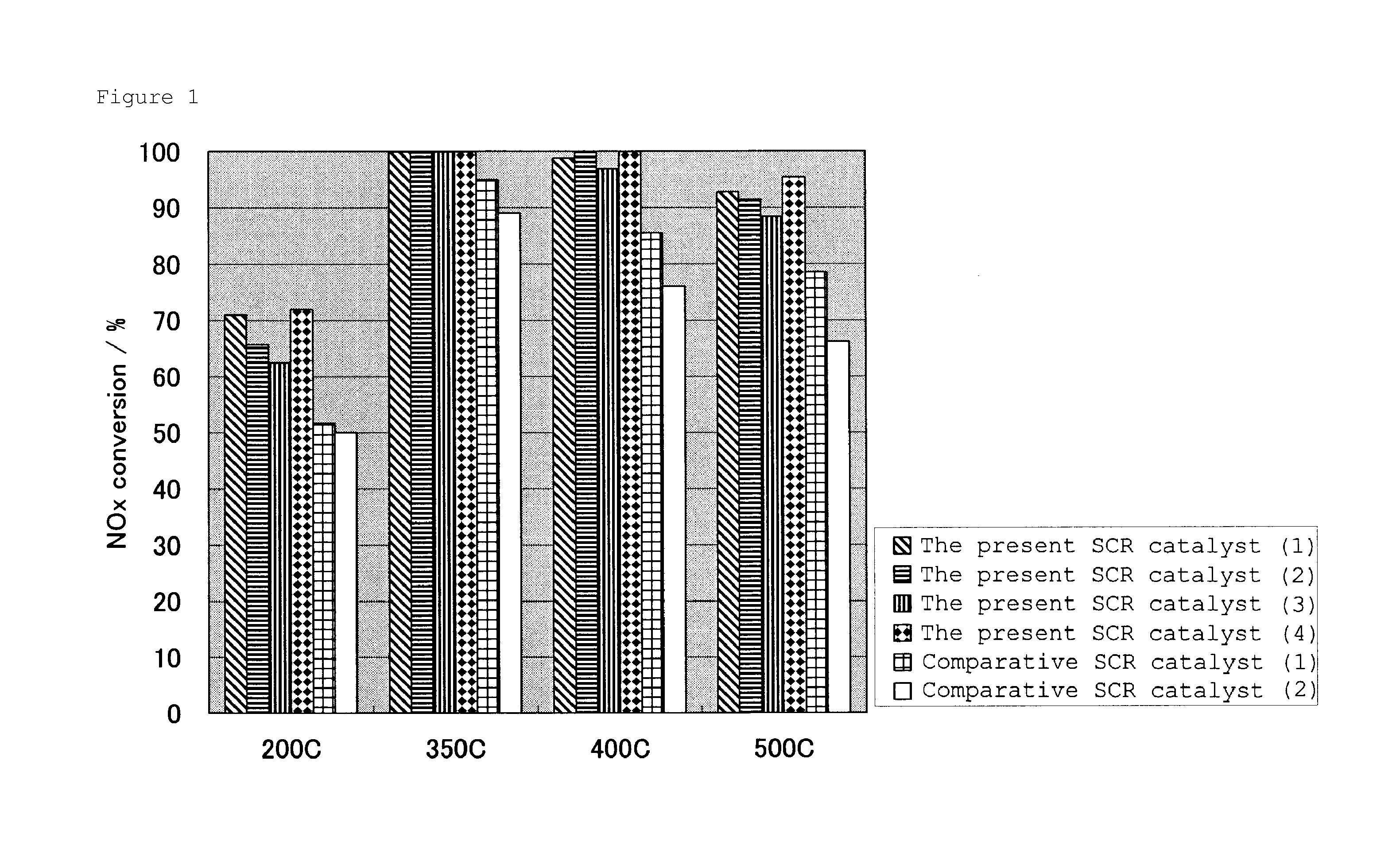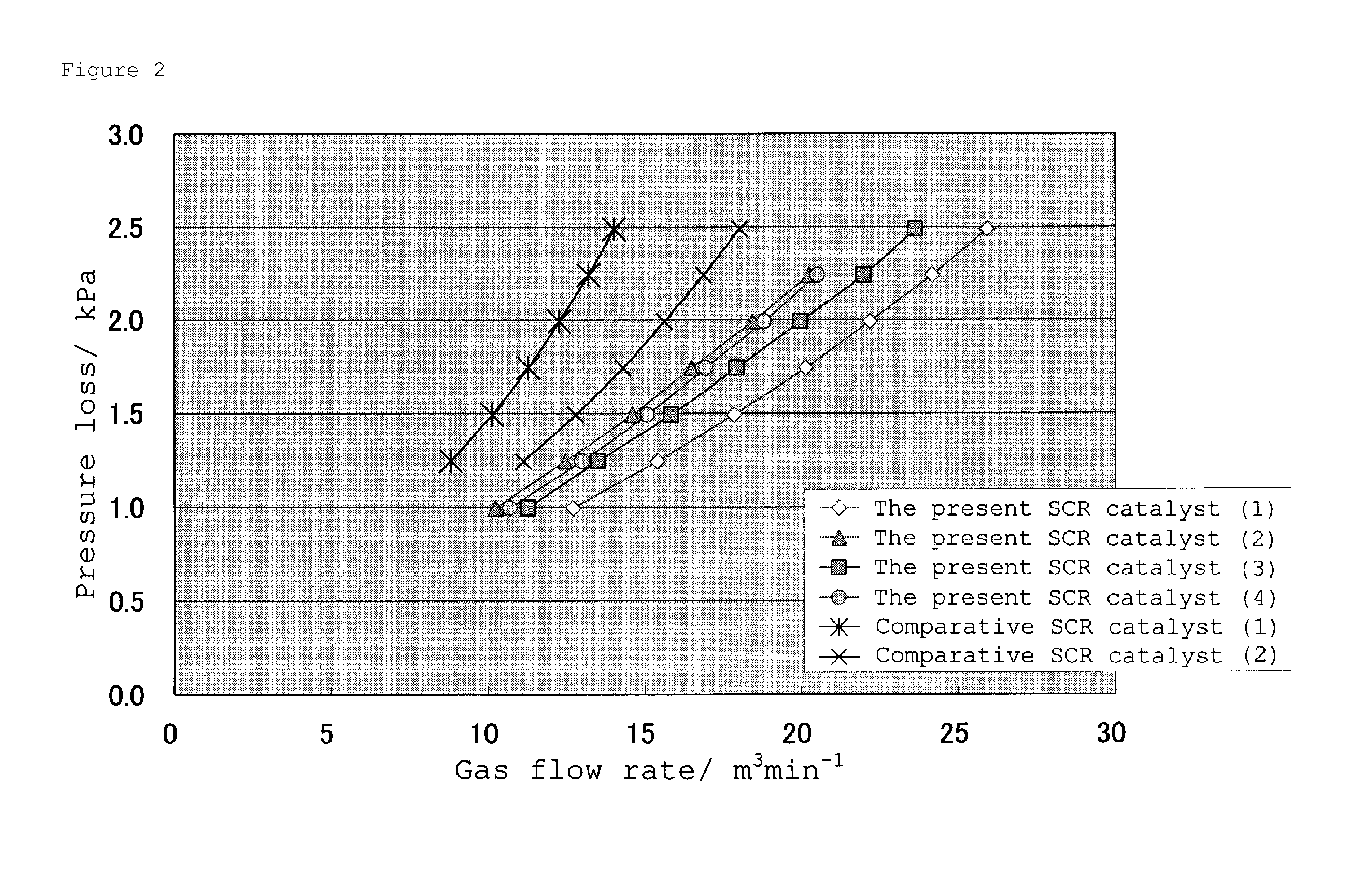Selective reduction catalyst, and exhaust gas purification device and exhaust gas purification method using same
a reduction type and catalyst technology, applied in the direction of metal/metal-oxide/metal-hydroxide catalysts, machines/engines, arsenic compounds, etc., can solve the problems of difficult suppression of harmful substances, risk of secondary pollution, and inability of conventional catalysts or control methods to purify exhaust gas in a satisfactory level, etc., to achieve superior heat resistance, high efficiency, and effective purification
- Summary
- Abstract
- Description
- Claims
- Application Information
AI Technical Summary
Benefits of technology
Problems solved by technology
Method used
Image
Examples
examples
[0113]Characteristics of the present invention will be made further clearer below by showing Examples and Comparative examples, however, the present invention should not be limited to aspects of these Examples. It should be noted that catalyst to be used in the present Examples and Comparative Examples are prepared by a method to be shown next.
[Production of the Present SCR Catalyst (1)]
[0114]A hydrolyzing component of urea, that is, 54 g of the composite oxide (C) (87% by weight of TiO2 / 10% by weight of ZrO2 / 3% by weight of SiO2) was prepared, and concentration thereof was adjusted with water, and milled using a ball mill to obtain predetermined particle diameter.
[0115]While stirring the slurry of the composite oxide (C) with a stirrer, water, 60% nitric acid aqueous solution, the composite oxide (B), that is, 679 g of a Si / W / Ce / Zr-type material (1% by weight of SiO2 / 10% by weight of WO3 / 23% by weight of CeO2 / 66% by weight of ZrO2) and next the zeolite (A), that is, 232 g of Fe-ion...
PUM
| Property | Measurement | Unit |
|---|---|---|
| weight | aaaaa | aaaaa |
| composition | aaaaa | aaaaa |
| temperature | aaaaa | aaaaa |
Abstract
Description
Claims
Application Information
 Login to View More
Login to View More - R&D
- Intellectual Property
- Life Sciences
- Materials
- Tech Scout
- Unparalleled Data Quality
- Higher Quality Content
- 60% Fewer Hallucinations
Browse by: Latest US Patents, China's latest patents, Technical Efficacy Thesaurus, Application Domain, Technology Topic, Popular Technical Reports.
© 2025 PatSnap. All rights reserved.Legal|Privacy policy|Modern Slavery Act Transparency Statement|Sitemap|About US| Contact US: help@patsnap.com


